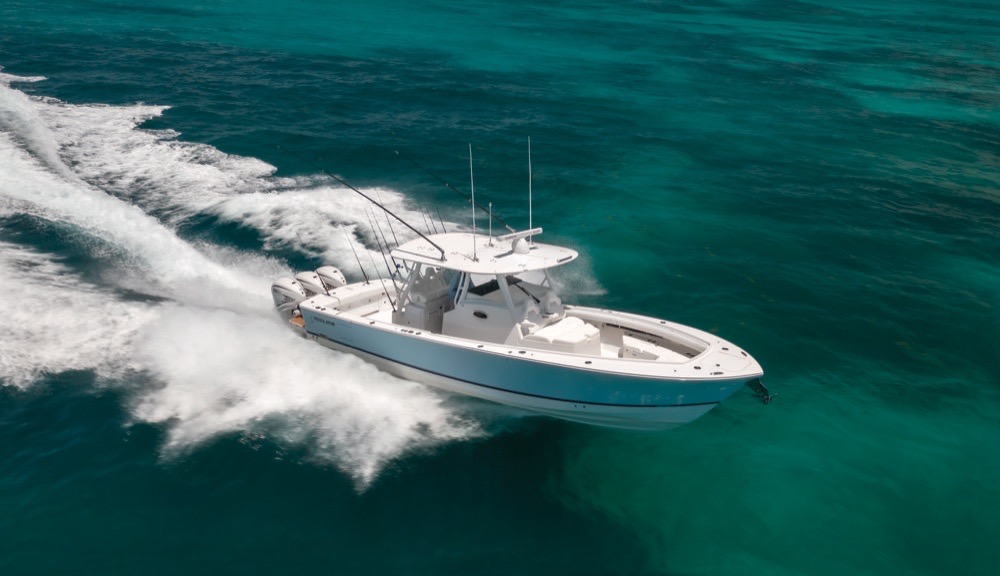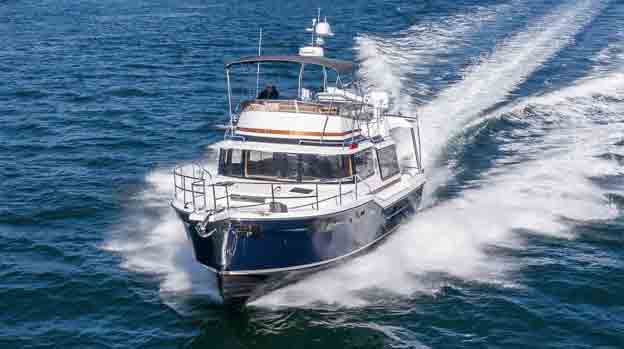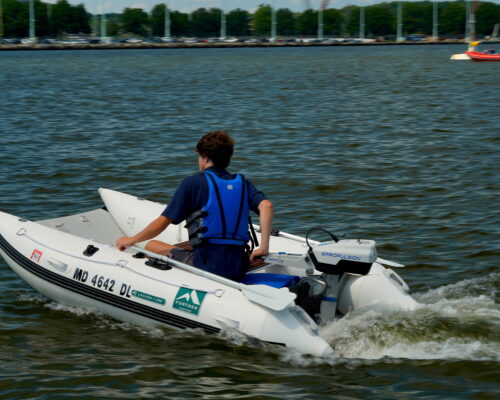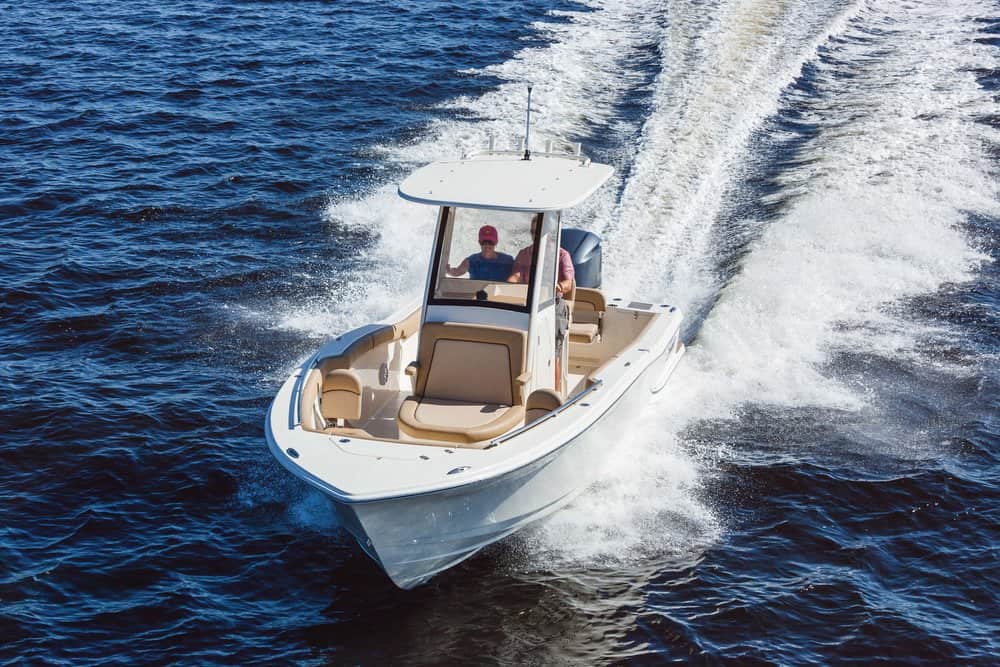The outboard motor has come a long way. Once it was an optional, detachable accessory. A hundred years ago, an outboard motor was a single-cylinder, smoky, two-stroke powerplant of single-digit horsepower with oil mixed into its gas at 1:10, driving a two-blade propeller. It was built to be easily portable, with an integral fuel tank holding maybe a quart and a screw-down clamp for attaching to the transom of a 12–14′ rowboat (preferably with a safety line tied into the boat). Cruising speed would have been maybe five knots. Range on the integral tank would have been maybe five nautical miles, which is why the skipper would carry a red, steel one-gallon tank of mixed gas and a funnel for on-the-water refills. On lakes, the outboard turned simple rowboats into wide-ranging fishing craft and family excursion vessels. Such rigs, of course, still serve people on lakes well today, though the vessel is likely to be an aluminum jon boat and the outboard is likely to be a small, clamp-on four-stroke or even an electric.
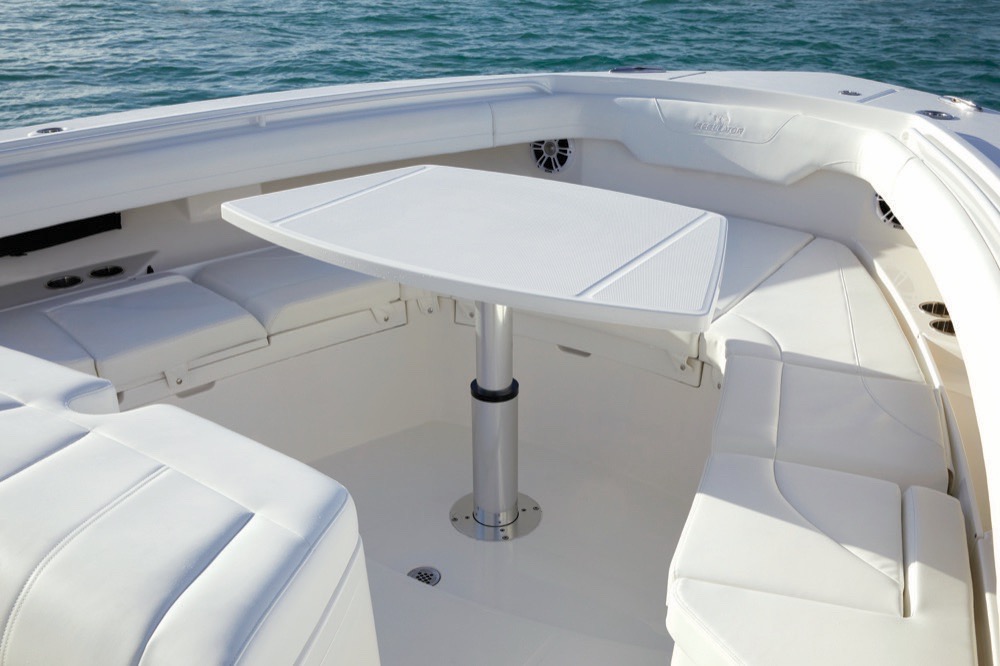
Fifty years ago, the outboard had become primary power, large enough to bolt onto the boat’s transom. An open center-console was a Spartan fishing machine, 17–24′ long, with a semi-V hull (12–15 degree deadrise) and a self-bailing cockpit but minimal accommodations for comfort. Electronics included a rotary flasher fishfinder and a citizen’s band radio. It might or might not have a helm chair or a seat in front of the console. Power would have been a single, somewhat less smoky three-or-four-cylinder two-stroke outboard of 60–125 horsepower with oil mixed into its gas at 1:50, wired to one or maybe (in top-of-the-line boats) two lead-acid batteries to drive running lights, the fishfinder, the radio, and the engine’s starter motor. It would have driven a three-blade, stainless-steel propeller, with mechanical cable steering, controlled by stainless-steel cables to throttle and shift. Its fuel tank would have held 24–55 gallons. Cruising speed would have been 15–22 knots. Range would have been 100–125 nautical miles. These boats were seaworthy enough for coastal bays and nearshore ocean waters, and despite their lack of upholstery, people quickly realized their versatility for other uses. They remain popular and useful, especially if powered by modern four-stroke outboards.
Regulator 37
LOA: 37’7″
Beam: 12’7″
Draft: 34″/46″
Air Draft: 11’3″
Weight (w/engines): 19,300 lb.
Transom Deadrise: 24º
Fuel: 507 gal.
Diesel: 21 gal.
Water: 50 gal.
Waste: 13 gal.
Max HP: 1,275
EC Rating: B8, C11
For more information, visit Regulator Marine at www.regulatormarine.com
or Bluewater Yacht Sales at
www.bluewateryachtsales.com
Now consider Regulator’s new 37′ center-console, introduced last February. It’s a serious bluewater boat, capable of long runs to offshore waters. Its three engines have become integral elements in a package as complex as any large, conventional sportfisherman. True to the breed, it’s still open all the way around, with a self-bailing cockpit. It runs on a 24-degree, prismatic deep-V hull designed, like all its Regulator sisters, by Lou Codega with precisely sized and positioned strakes and chines. An engineered framework built into the corners of its console and its elevated three-across helm seat/tackle center support a top that shades those seats, plus the double seat in the front of the console. An elevated second steering station built on the top structure is optional. Additional seating includes a flush-mounted sun bed with filler cushion and convertible, electrically articulated pedestal table in the bow, and a double, rear-facing “mezzanine” seat on the aft side of the tackle center.
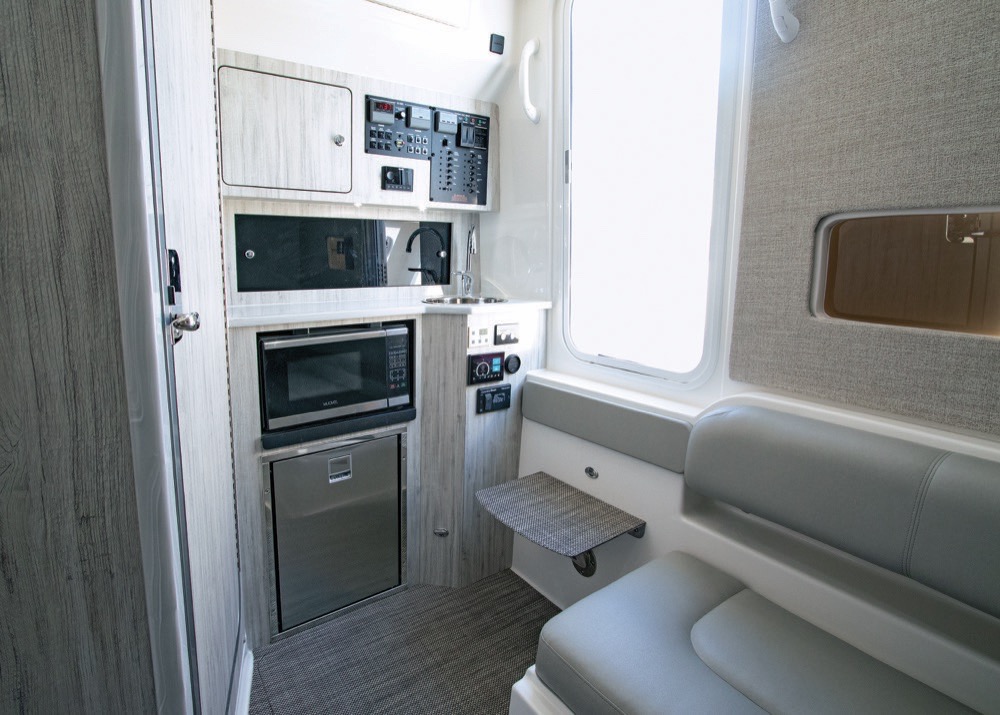
The 37’s console holds an air-conditioned cabin (83″ headroom) with a double bunk, an enclosed head with electric toilet and holding tank, a shower with hot and cold water, a refrigerator, and a galley sink with microwave. Power comes from three linked 425-hp, 5.6-liter, direct-injected four-stroke V-8 Yamaha XTO Offshore outboards with digital electronic steering and controls (including a Helm Master EX joystick for maneuvering), set on an integrated transom bracket. A ZipWake interceptor system controls trim automatically while underway for maximum comfort and efficiency. Although naturally aspirated (meaning they have no turbo- or supercharger), these big Yamahas are easily as sophisticated as the engines of modern, street-legal cars, SUVs, and pickup trucks.
As in those land vehicles, a digital cable wiring harness controls this Regulator. Therein hangs another tale. The standard Garmin electronics package for the Regulator 37 includes a dual 22″ GPSMAP 8622 Multi-Touch Widescreen Chartplotter/Sonar Displays (three 17″ displays are optional), a VHF 215 AIS radio with 8′ Antenna, a GMR 424 xHD2 4kW open-array radar, and an Airmar 1kW CHIRP transducer, all interfaced with a Yamaha Helm Master EX digital autopilot. Seven marine batteries serve engine starting and house batteries for 12-volt circuits, including extensive lighting and a Fusion stereo system with four speakers. (An upgraded system with 10 speakers is optional.) However, the 37 has a 110-volt system as well, driven by a standard Onan 9kW diesel generator. Many 37s will carry an optional 13.5 kW Onan to drive an optional air-conditioning system for the helm, an optional electric grill and refrigerator built into the large helm seat base, and, to be sure, an optional SeaKeeper 5 gyro stabilizer. The Onan and the SeaKeeper live in a large utility room under the cockpit sole with other plumbing and wiring. Lifting the mezzanine seat provides comfortable access.
This boat is obviously not your grandfather’s 1972 center-console, which relied on a handful of fused switches to control its few systems. Fortunately and not accidentally, Regulator Marine employs a robust engineering staff of “gearheads and wirenuts” who love a challenge like making all of these systems work as seamlessly for an owner as a luxury automobile does. Working with Garmin and Yamaha gearheads and wirenuts, this team built a “Proprietary Regulator MyHelm Interface for Seamless and Intuitive Connectivity of Key Functions via Touchscreen, and Wireless Key Fob,” including an “Offshore Command Center with Digital Switching and Monitoring” built into the helm’s Garmin multi-function displays and Yamaha CL5 Multifunction touchscreen display. The MyHelm system makes getting the boat ready to go as easy as touching the key fob while walking down the dock to its slip. Although it controls many systems whose complexity can be daunting at first, MyHelm is so intuitive that a day on the water is often sufficient to break in a new skipper. In any case, the Garmin displays hold a complete owner’s manual and guide.
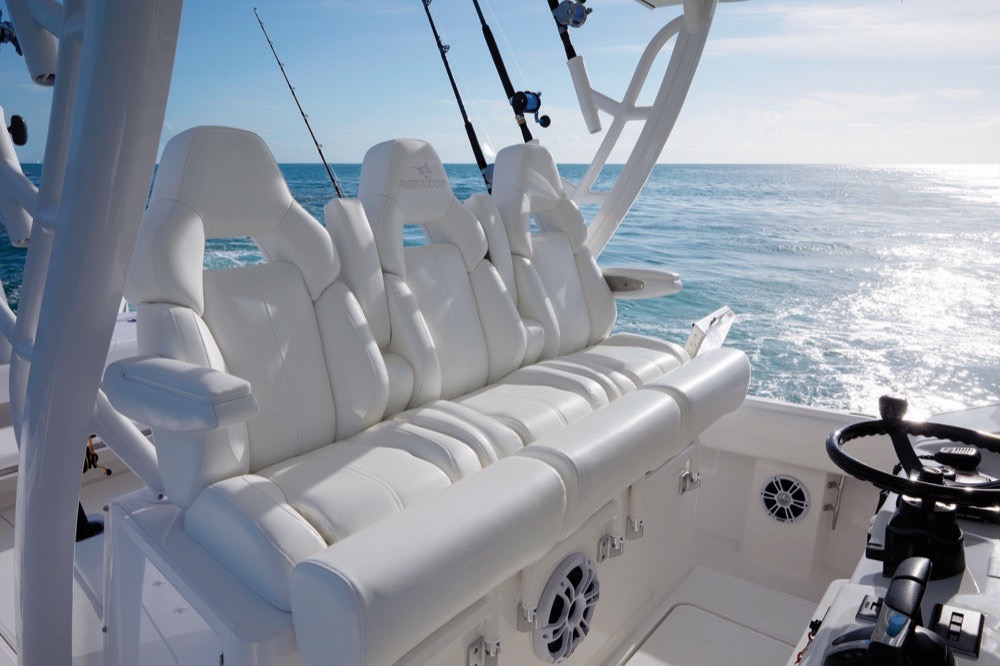
So if the Regulator 37 is truly a bluewater boat, what does that mean in terms of speed and range for this 19,000 pounder? In our sea trial, the boat (actually hull #1) loved cruising at 27–35 knots, with a top speed just under 50 knots. At those cruising speeds, range (assuming 90 percent of 507 gallons) is around 300 nautical miles. Lou Codega’s Regulator hulls are well proven as sea boats. Those gearheads and wirenuts share space with structural engineers who work closely with lamination and rigging crews to ensure that each hull reproduces Codega’s lines faithfully and comes together with the strength to withstand the crushing forces that the three big Yamahas, the SeaKeeper gyro, and big water seas can inflict on it together.
In the end, the Regulator 37 is a state-of-the-art outboard vessel that can fish hard and safely way offshore, but back at the dock, a good cleanup turns it into an inviting sunset social center for reliving an excellent day on the water. And while a boat like this may be larger than some Bay boaters need, the design, systems, and craftsmanship shown here have a history of making their way down to smaller versions that are just right for many of us here on the Chesapeake. Aren’t we lucky?
Base price for a Regulator 37 is $749,995. A SeaKeeper 5 Gyro, 13.5 kW Onan generator, and 12 BTU air conditioning brings it to $829,780.

